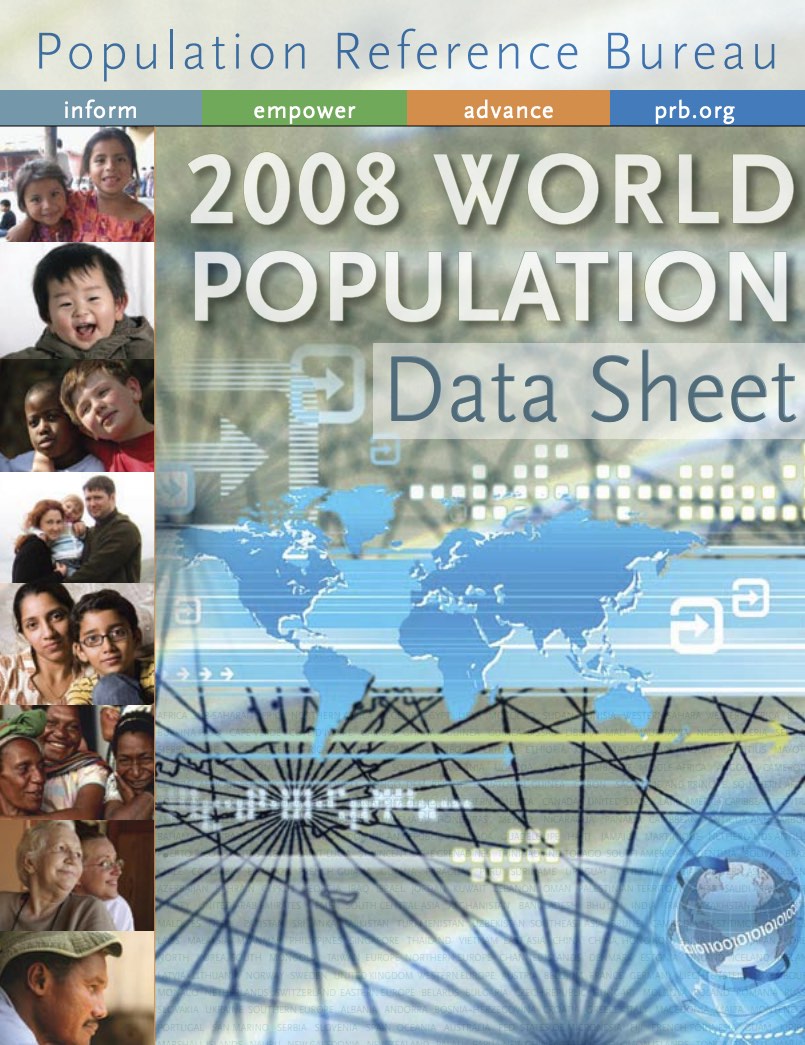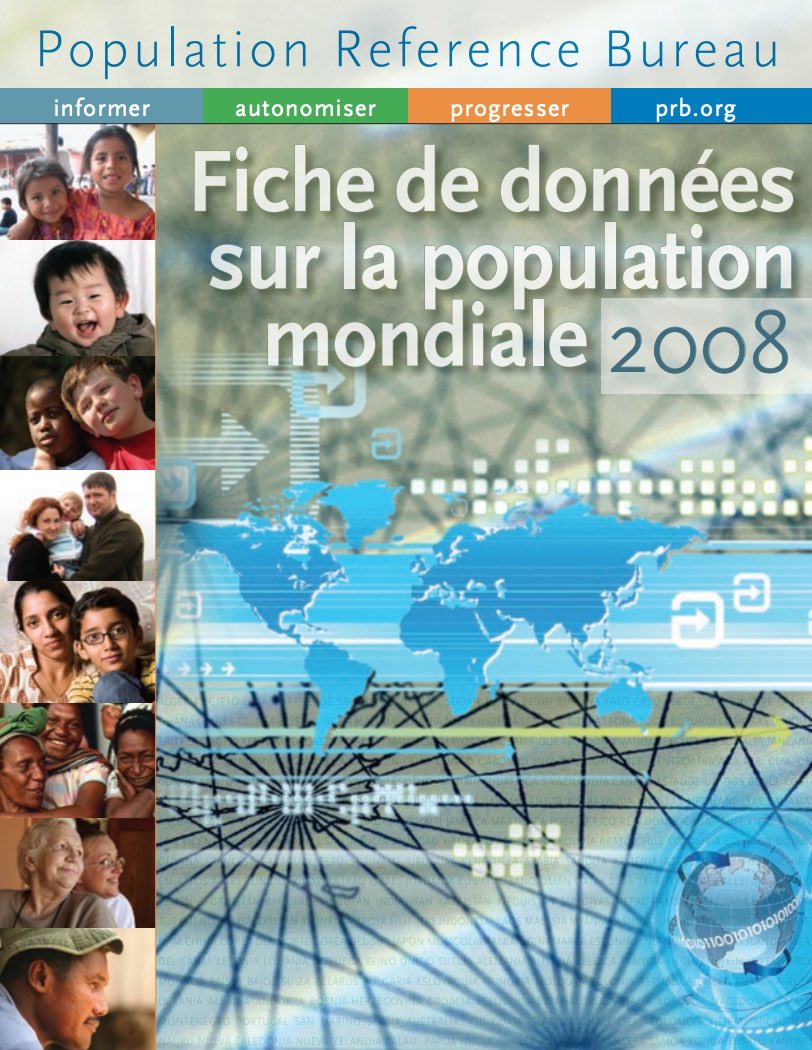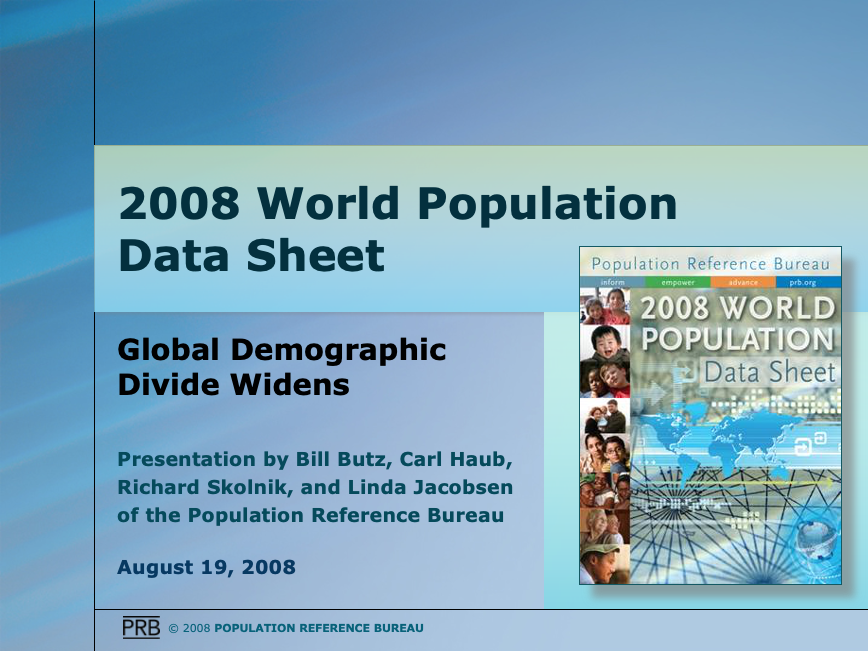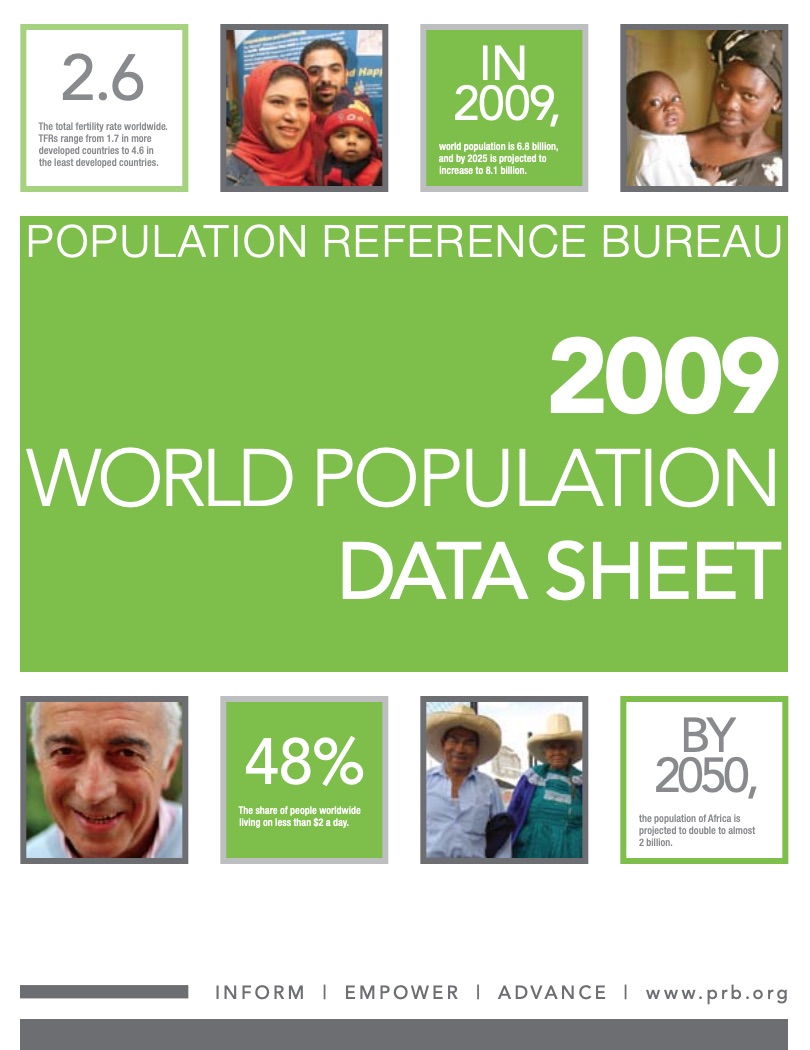2008 World Population Data Sheet (PDF)
(2008) The demographic divide—the inequality in the population and health profiles of rich and poor countries—is widening.

(2008) The demographic divide—the inequality in the population and health profiles of rich and poor countries—is widening.

(2008) The demographic divide—the inequality in the population and health profiles of rich and poor countries—is widening.

(2008) The demographic divide—the inequality in the population and health profiles of rich and poor countries—is widening.
(2013) The United Nations Population Division has just released its comprehensive estimates and projections, World Population Prospects: The 2012 Revision. The results show a larger global population size in 2050, 9.6 billion, up from the 9.3 billion that the UN projected in its 2010 Revision. A major reason for the higher projection is higher fertility (birth rates) in some countries than previously estimated, particularly in Africa. Much of that information comes from recent demographic surveys.
Project: Demography and Economics of Aging and Alzheimer’s Disease
In this webinar, two distinguished researchers discussed how U.S. state policies and systems can affect racial and regional inequities in health and longevity.

(2009) Global population numbers are on track to reach 7 billion in 2011, just 12 years after reaching 6 billion in 1999. Virtually all of the growth is in developing countries.
(2010) In many countries, the elderly now make up an unprecedented share of the population. This increase in the number of older people has implications for national budgets, labor force growth, and family support systems.
(2000) The current period of rapid population growth will continue for at least another 50 years, according to the 2000 World Population Data Sheet of the Population Reference Bureau. By 2050, the world is expected to add 3 billion more people to reach a total of 9 billion.